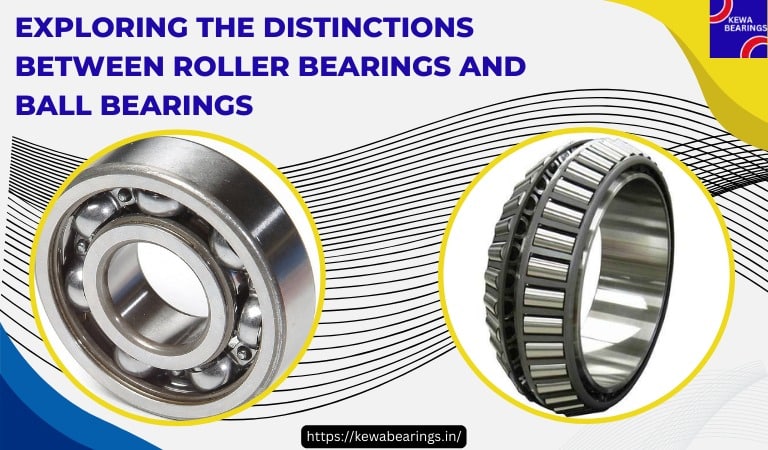When it comes to mechanical engineering, bearings play a pivotal role. Among the variety of bearing types available, roller bearings and ball bearings are two of the most commonly sought options. Both serve the fundamental purpose of reducing friction and supporting radial and axial loads, yet they exhibit distinct characteristics that make them suitable for specific applications. In this article, Kewa Bearings will explain the differences between the two bearings, shedding light on their respective advantages, drawbacks, and optimal use cases.
A Sneak Peek into the Significance of Bearings
Bearings are crucial components that facilitate motion by reducing friction between moving parts. They are widely employed in industries such as automotive, aerospace, manufacturing, and more. Bearings not only enhance efficiency but also extend the longevity of machinery. Let’s understand both bearings in detail.
Roller Bearings
As the name suggests, these incorporate cylindrical rollers to distribute loads evenly over a larger surface area. This design inherently allows them to handle heavier loads and endure higher radial and axial forces. These come in various configurations, including cylindrical, tapered, and spherical designs. Here are the advantages and drawbacks of this bearing:
Advantages of Roller Bearings
Given the impeccable features this bearing comes with, it boasts of the following advantages:
- Higher Load Capacity – These can carry heavier loads due to their larger contact area and better load distribution, making them suitable for applications involving heavy machinery.
- Enhanced Radial Stability – Their design offers improved radial stability, making them ideal for situations where shaft deflection or misalignment is a concern.
- Durability – These bearings are better equipped to handle shock and impact loads, making them suitable for challenging roller bearing applications.
Drawbacks of Roller Bearings
However, that’s not all. The bearings also come with certain drawbacks:
- Higher Friction – Due to increased surface contact, these bearings tend to have slightly higher friction compared to ball bearings, which might lead to slightly lower rotational speeds.
- Cost – The design complexity of these bearings often translates to higher manufacturing costs.
Ball Bearings
Ball bearings, on the other hand, utilize spherical balls to separate and distribute loads, and that too with different ball bearing housing types. They are known for their smooth operation and are commonly used in applications requiring high rotational speeds and moderate load capacities.
Advantages of Ball Bearings
Here are the advantages of ball bearings:
- Lower Friction – Ball bearings have a point contact design, resulting in lower friction and subsequently allowing for higher rotational speeds.
- Precision and Accuracy – Their design facilitates precision, fostering such ball bearing applications where minimal tolerance deviations are crucial.
- Cost-Effectivenes – Ball bearings are often simpler to manufacture, leading to lower production costs.
Drawbacks
Ball bearings, too, come with their own set of disadvantages. Here are the major ones:
- Limited Load Capacity – Ball bearings are not as adept at handling heavy loads due to their smaller ball bearing design contact area.
- Reduced Radial Stability – Their design makes them more sensitive to shaft misalignment or deflection, making them less suitable for applications with these challenges.
Applications and Suitability
The choice between these two bearings largely hinges on the specific application’s requirements and operating conditions.
So, where are roller bearings used? They are used when dealing with heavy radial and axial loads, as is the case with industrial machinery, construction equipment, and conveyor systems. Radial stability and robustness are essential due to harsh operating conditions; nothing can serve the purpose better than these bearings. These bearings are also used in situations where the shock and impact loads are prevalent.
Ball Bearings excel in situations requiring high rotational speeds, like in electric motors, turbines, and automotive components. The application of ball bearings can also be found when precision and accuracy are paramount, such as in medical devices, robotics, and aerospace applications.
So, this was all about roller and ball bearings. Wish to do a price comparison between the two? Do it with one of the leading bearings suppliers – Kewa Bearings at https://kewabearings.in/.

